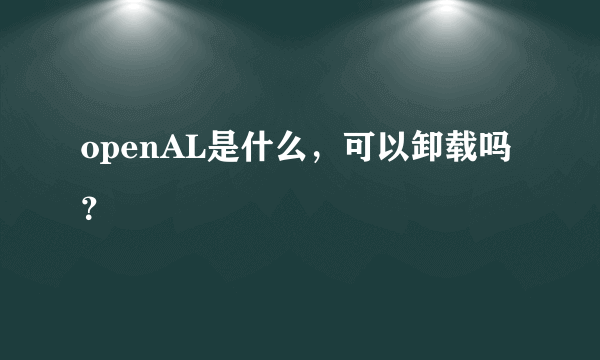open a door和open the door有什么区别?
的有关信息介绍如下:
the 的用法定冠词(the Definite Article),冠词是虚词,本身不能单独使用,也没有词义,它用在名词的前面,帮助指明名词的含义。英语中定冠词就是the 定冠词的用法: 1. 用以特指某(些)人或某(些)事物 This is the house where Luxun once lived. 这是鲁迅曾经住过的房子。 2. 用于指谈话双方都明确所指的人或事物 Open the door, please. 请把门打开。 3. 用以复述上文提过的人或事物(第一次提到用“a或an”,以后再次提到用“the”) Once there lived a lion in the forest. Every day the lion asked small animals to look for food for him. 从前森林里住着一只狮子。每天这只狮子要小动物们为他寻找食物。 4. 用在序数词和形容词最高级前 January is the first month of the year. 一月份是一年当中的第一个月。 Shanghai is the biggest city in China. 上海是中国最大的城市。 5. 表示世界上宇宙中独一无二的事物 the sun 太阳 the moon 月亮 the earth 地球 the sky 天空 the world 世界 6. 指由普通名词构成的专有名词 the West Lake 西湖 the Great Wall 长城 the United States 美国 the United Nations 联合国 定冠词的用法-2 7. 表示方向、方位 in the east 在东方 in the west 在西方 in the front 在前面 at the back 在后面 in the bottom 在底部 at the top 在顶部 on the right 在右边 on the left 在左边 8. 在海洋、江河、湖泊、山脉、海峡、海湾等地理名词前 the Pacific Ocean 太平洋 the Huanghe River 黄河 the Tainshan Mountains 天山山脉 the Taiwan Straits 台湾海峡 9. 在姓氏复数前,表示一家人 The Bakers came to see me yesterday. 贝克一家人昨天来看我。 10. 和某些形容词连用,使形容词名词化,代表一类人或物 the poor 穷人 the rich 富人 the sick 病人 the wounded 伤员 the good 好人 the beautiful 美丽的事物 11. 用在表示阶级、政党的名词前 the working class 工人阶级 the Chinese Communist Party 中国共产党 12. 用在the very强调句中 This is the very book I want. 这就是我想要的那本书。 13. 在the more, the more比较级的句式中 The more you drink, the more you like it. 你越喝就越爱喝。 14. 表示演奏乐器时,乐器的前面要加the play the piano 弹钢琴 play the violin 拉小提琴 [中国乐器名词前不与冠词连用:play erhu(二胡) ] 15. 某些固定的表达法 in the morning 在早上 in the afternoon 在下午 in the evening 在晚上 go to the cinema 去看电影 go to the theatre 去看戏 all the year round 一年到头 on the way to 前往...去的路上 16. the加单数可数名词可以表示一类人或事物 The horse is a useful animal. 马是一种有用的动物。 注意:像这类句子还有如下两种写法 A horse is a useful animal. Horses are useful animals. 17.在句型“动词+sb.+介词+the+身体某一部位”中要用 the,而不 用人称代词。 take sb. by the arm 抓住某人的手臂 hit sb. in the face 打某人的脸 be red in the face 脸红 be lame in theright leg 右腿瘸 等结构中,名词前要用the 18. 特指双方都明白的人或物: Take the medicine. 把药吃了。 19. 与复数名词连用,指整个群体: They are the teachers of this school.指全体教师) They are teachers of this school. (指部分教师) 20. 表示所有,相当于物主代词,用在表示身体部位的名词前: She caught me by the arm.. 她抓住了我的手臂。 21. 用在某些由普通名词构成的国家名称、机关团体、阶级、等专有名词前: the People's Republic of China 中华人民共和国 the United States 美国 22. 用在某些习惯用语中 at the same time 同时 by the way 顺便问一句 for the present 暂时 go to the cinema 看电影 in the end 最后 in the dark 在黑暗中,不知道 in the least 一点,丝毫 in the open 在野外 in the past 在过去 in the long run从长远来看 in the event of 万一 in the morning 在上午 in the way 挡道,碍事 on the whole总体上 on the other hand 另一方面 on the contrary相反地 out of the question不可能的a 的用法不定冠词的基本用法 (1) 不定冠词有a和an两种:a用于辅音音素开头的词前,an用于元音音素开头的词前。例如:a boy, a city, a girl, a useful animal , an old man, an honest boy, a bad apple, a tall elephant (2) 用来表示“—”的意思,但不强调数的观念,只说明名词为不特定者。即不具体说明是何人何物。例如: A teacher is looking for you. We work five days a week. (3)不定冠词含有“—”的意思,但数量观念没有one强烈,在句子里边一般可以不必译出,但若有“一个”的意思则译出,例如: —— An orange is good for you. 桔子对你有好处。 —— How much is it ? 多少钱? ——Two yuan a kilo. 二元一公斤。 (4)一般用在可数名词单数前,指人或事物的某一种类。例如: Bill is a student. Pass me an apple, please. 例外:I have never seen such a fine film. (5)用在某些固定词组中。例如: a lot of, a moment ago, a few, a little

